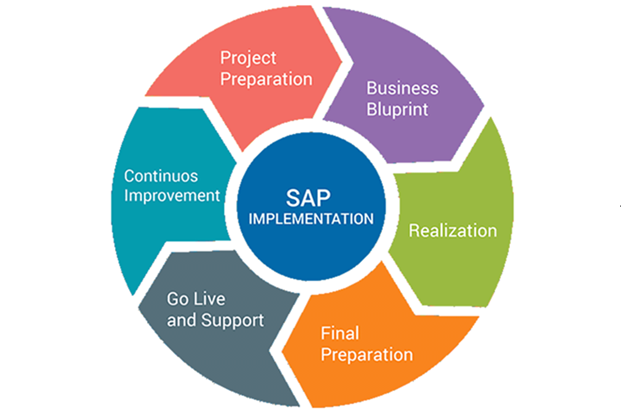SAP software helps businesses manage complex organizations effectively. Thanks to its rich feature set, SAP promises big gains for organizations that implement it.
Another side of this story is that implementations and integrations are associated with risks. Knowing how to manage them is the key factor of successful SAP implementation.
This article will discuss SAP implementation and how to avoid poor implementation results while managing risks effectively.
Let’s get started!
What Is SAP Implementation?
SAP implementation is setting up SAP software and integrating it within the business’s organization.
SAP software helps manage business processes such as finance, HR, shipping, sales, and supply chain. Therefore, SAP implementation requires migrating the existing data needed for these processes.
If it is done right, you get a business that performs better than before. If not right, you get delays, frustration, and loss. That is why SAP implementation is often handed to services and companies with respecting expertise.
What Are the SAP Implementation Steps?
Some companies consider SAP implementation to be a plug-and-play project. In fact, this may result in challenges, sometimes more complicated than the implementation itself.
Therefore, you must carefully identify your needs and plan every step to implement SAP successfully.
Usually, SAP implementation takes the following steps:
Step 1. Discovery
It is very important to identify your organization’s current state. You should answer several questions, like what business needs you should address first, what the scope of implementation is, etc. This phase allows you to outline the next steps.
Step 2. Preparation
With a clear idea of the company’s current state, you move on to planning. You develop a detailed project outline at this stage, estimate the resources and costs you must dedicate, and set timelines.
Step 3. Exploration
It is also important to explore which SAP features are necessary for your organization and which are secondary.
Step 4. Configuration
Baes on the selected features, the tech team configures SAP software and prepares your data for migration. It is very important to ensure your data is clean and well-structured. This will make SAP implementation projects faster and smoother.
Step 5. Deployment
Once the system is fully configured, it’s time for deployment. Some companies tend to rush to deployment, skipping the preparation stage. Yet, to migrate effectively, everything must be done in the right order.
For example, if you skip the data preparation stage or rush through it without due diligence, you may lose invoices, be unable to track shipments or hand-check sales reports.
Step 6. Maintenance
Also, as the system is deployed, it requires support and maintenance.
Besides regular support, companies often need additional tune-ins, as it’s hard to predict all the system specifics without actually working with them for some time.
What Challenges Do You Expect From SAP Implementation?
Since we discussed the importance of organizing things properly while implementing SAP, let’s also discuss the challenges you will face during and after the implementation stage.
-
Lack of resources
As you migrate to a totally different system, it’s clear that part of your operations will be closed. Therefore, it is important to ensure you have enough resources to work in different directions to make the transition as fast as possible.
If you are using the in-house developers, ensure their number is enough. If you don’t have such a guarantee, consider staff augmentation services.
If you use SAP implementation services like the LeverX team, ensuring the company you hire will execute the migration within the terms you expect is also important.
-
Workforce transition
Even if you run the migration fast, it will take time for your workforce to get used to working in an SAP environment. Therefore, we recommend starting staff preparation before the implementation.
Having a person on your team responsible for cultural transition would be great. Every team member must understand the value of the SAP implementation and its future benefits.
-
IT Transition
The new system will also present challenges for the existing IT support. They will have to learn new architecture and acquire new skills.
Therefore, preparing your IT department to work with SAP is also essential. Some of your teammates may have new responsibilities, and the team’s structure may also be altered.
Therefore, we recommend paying attention to guided skill transitioning, pre-launch training, and preparing the structure of new IT organizations before implementation.
Summing up
SAP implementation offers smoother processes, faster operations, and, as a result, better ROIs. Yet, it is important not to underestimate the preparation stage. Your team, developers, and data must be ready for the new system.


